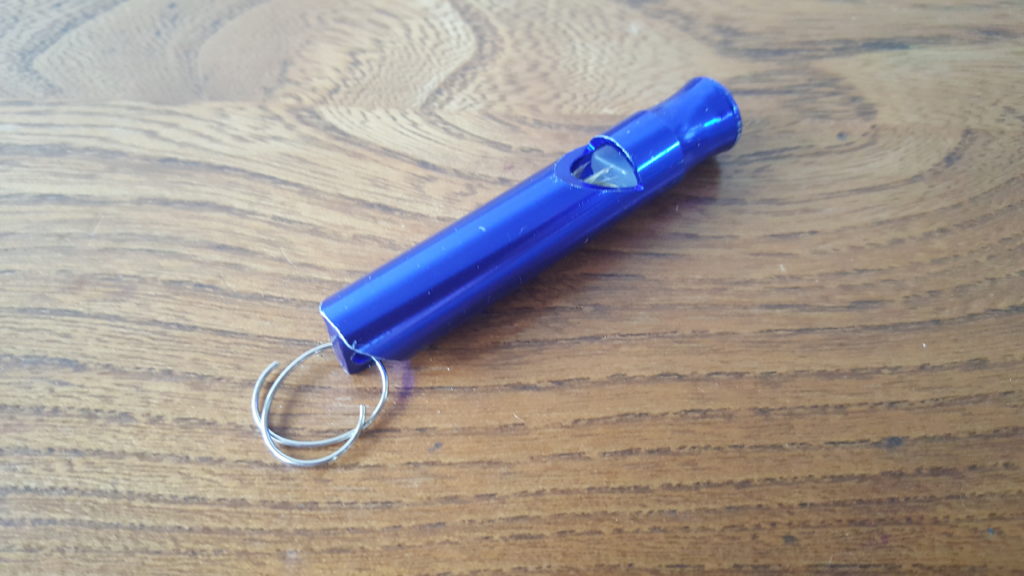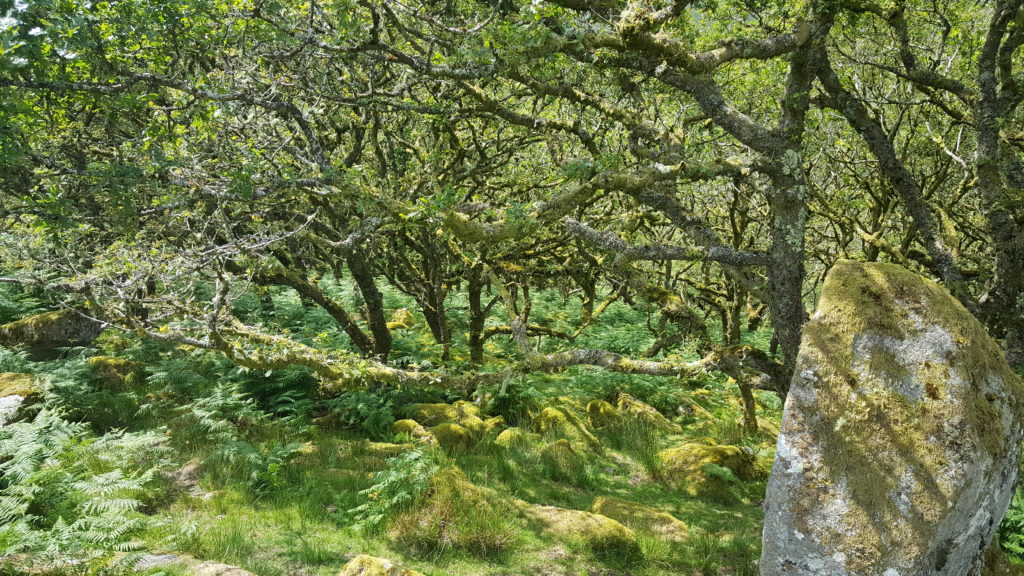We recently got a lovely message from old friend of the site Katherine Venn. ‘A couple of weeks ago I finally did something I’ve been wanting to for years’ she said, ‘walk the length of the Dart, from source to sea, inspired by Alice Oswald of course. I did it on my own, bivvying out on Dartmoor the first two nights, with just a copy of Dart for company…’
Read the first instalment of her resultant new column below.
*
Attached to one of the rings on my rucksack – in fact not mine, but borrowed from a neighbour in a panic last night – is a small blue metal whistle. Bought at the last minute, probably unnecessarily as I’m sure I have an old policeman’s whistle in a crate somewhere at home, it’s pleasingly minimal, pleasingly blue. But mainly it convinces me what I most need to be convinced of: that I’m prepared for this, to walk from the source of the Dart to the sea. It’s my talisman. Surely having a whistle to be able to call for help represents the ne plus ultra of preparedness – even if I only discovered last night that I didn’t have a rucksack big enough for my purposes. A couple of days in it begins to remind me of the hopelessly optimistic way my brother and I, as children, had ‘lined’ the stairs with pillows when choreographing a playfight. Yes, I snapped my collar bone.

I’ve read that the head of the East Dart is harder to find and a bit more remote than the West, so it’s the source of the West that I’ve decided to walk from. First, of course, I need to find it. Two Bridges seems the easiest start point so I pitch up here late Saturday afternoon with the skies cloudy, already worried that despite the whistle I haven’t packed enough clothes. I’m nervous. There’s a teenage couple drinking beer and eating creamteas, writing postcards, and I think about how it felt to be that age, and how it still seems so close even now, as well as impossibly distant; like looking through a pair of binoculars the wrong way round. I think about how it can feel to be one body of water joining another in the fling and churn of desire, the illusion that you were always one and have found your twin, who just happened to rise at a different point on the earth’s surface.
Studying the map calms me, though really I should have spent longer looking at it back in London where, spread out on the floor, the cat found it a perfect place to stretch out.

But how hard can it be to just follow a blue line until it runs out? I’m sitting at a picnic table with the river to my right, feeling almost shy to look at it. For now the whoosh of the cars on the main road is louder. There are lots of sparrows, hopping around for crumbs of scone before whirring back into the conifer hedge. I set off.
Within half an hour I’m at the edge of Wistman’s Wood. The jumble of rocks on the slope going down to the West Dart here have made it impossible to farm, so the oaks have been left to grow for upwards of 6,000 years. They’re short for oaks, and covered with lichen;the boulders at their roots are blanketed with thick emerald moss. It’s early evening and I’ve been facing a steady flow of walkers going in the opposite direction, heading back to the car park in the old quarry at Two Bridges. Now no one’s in sight; the last people I hear are a man and a boy somewhere behind me, hidden by bracken, taking a path I haven’t seen. I can hear the Dart below me in the valley; strangely, it seems to have the same timbre as the cars on the road earlier. A sheep bleats. There are sparrows, still. As I sit to sketch the view to the south and west, leaning on my knees, I’m startled by the flowering grass that brushes against my thigh. There’s fresh bracken growth unfurling itself from the ground and tiny yellow four-petalled flowers.

Eight o’clock and I’m still walking what feels like north. Once the footpath marked on my map ran out I was worried about staying on the right side of the river to be able to navigate the stone walls parcelling up the moor, though I needn’t have been: they’re all crossed by ladder stiles. Still I’m pleased with the route I’ve been improvising for myself, even if I am just hugging the river. What was fields and stone walls is now simply moorland, and the river. The clouds have rolled back and suddenly everything is gold edged: tussocky grass and reeds, up to my knees. I have to pick my way close to the river which reflects the now-blue sky, with just a few suggestions of clouds towards the horizon. At every step I put up little birds – skylarks, I think. Three ducks clatter up, making my heart clatter for an instant too.

I come to a gang of cows grazing on both sides of the river, and they all stop to look at me in that unnerving way that cows do. Such big animals. I think I can spot a couple of calves so I need to be careful. My heart clatters again. A boyfriend once laughed at me for being nervous around cows but every once in a while a walker is killed. There’s a particularly large one on my side of the river, so I go right up the hill’s slope, getting breathless, to give it as wide a berth as I can. It watches me go. I can see more shapes coming into view overthe side of the hill: more cows? I’ll be walking right into them, and there are no walls here to scramble over if they don’t like the look of me. But the shapes resolve into a clitter slope of humped boulders. My heart slows as I pick my way back down to the river with the cows safely behind me, though for a while I keep looking over my shoulder to make sure they’re not following.
In another hour the river’s disappeared into a narrow channel obscured by reeds and it’s easier to hear than see it; each step is now a guessing game involving both where the river’s going and where I can safely put my feet.

The MOD firing range is on my left, marked by a line of red and white poles. The map tells me the source rises within the range – and my planning has at least been sufficient to make sure there’s no firing scheduled this weekend – but it seems unlikely I’ll reach it at this point. The ground’s boggy and the sky has clouded over again; I’m probably still a good mile away from the source but the sun’s about to set and I want to make sure I can find a patch of ground to sleep where I won’t sink into a mire. After chasing a little watercourse towards three foxgloves, bright purple flags in the fading light, I make my way back to a little peaty overhang where there are no reeds and the ground is making an attempt at dryness.
Sleeping out by myself is the element of this walk that I’m probably second most nervous about: I’ve camped wild before, but only with other people, and in a tent. Tonight I have just a bivvy bag. As with the planning, I have no idea how much thought about doing this, on my own, counts as enough. I have no idea how I’m going to feel. Nervous? Scared? Should I be? I’ve accepted the fact that I’m probably not going to enjoy it; may not sleep. But as well as it simply being the most straightforward way of doing the first part of the walk, there’s a large part of me that wants to do this, to get close – though I’m not quite sure what it is I want to get close to.

I unroll my new camping mat and my very old sleeping-bag, already in its army-issue khaki bivvy bag. When I lie down I can tuck my head, one shoulder and a bit of my torso under the overhang; I feel like a rabbit in its scrape. There’s something comforting about being able to have my back to something, and knowing I can only be approached from one side. But it’s at this point I realise I definitely haven’t brought enough clothes to sleep in, so I’m also glad to have the extra bit of warmth. I drink some bourbon from the hip flask my brother and sisters gave me for my birthday and nibble a bit of dark chocolate. Then I lie down, thinking I might as well try to sleep before my body realises it’s not quite warm enough. I’m asleep almost instantly.